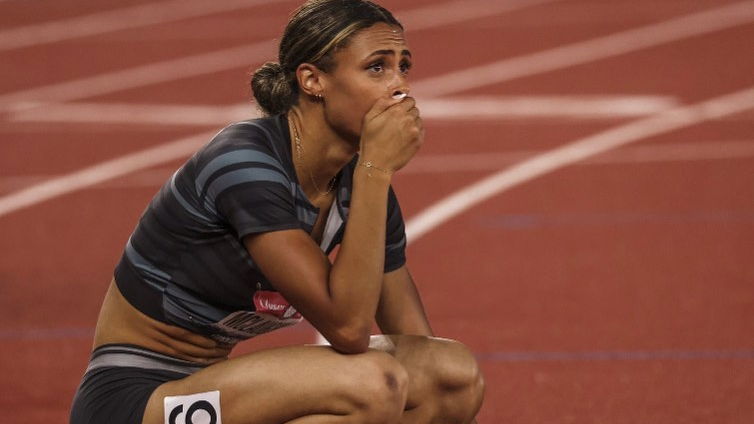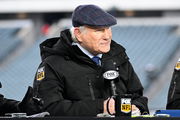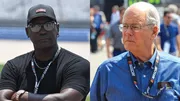

Ralph Mann surprisingly would once qualify Sydney McLaughlin-Levrone in the category of “running jumpers”—non-strategic, relying solely on speed and athleticism without a hint of an idea of which leg they’ll use to clear the hurdle, or worse, either stutter-step or overstride as they allowed themselves too much or too little a room. And then, there were “technicians” who would have the number of steps they’d take at the start, middle, and all the way to the end figured out to the T. When they first met in 2018, this was Mann’s initial assessment of Sydney: “Sydney had problems. She couldn’t hurdle with her opposite leg. With her primary leg, she was mediocre at best. And her training wasn’t to the point where she could handle the last three hurdles.”
Watch What’s Trending Now!
In 2019, Sydney McLaughlin-Levrone found herself facing a seemingly insurmountable challenge. At the U.S. National Championships, defending Olympic champion Dalilah Muhammad set a world record (WR), beating McLaughlin-Levrone by more than half a second. Two months later, at the world championships, McLaughlin-Levrone broke the world record herself but found herself behind Muhammad by 0.07 of a second. As unfortunate as it sounds, Sydney was absolutely clueless. Frustrated and desperate for an answer, McLaughlin-Levrone found Mann on the track’s infield and turned to the four-time AAU national champion.
She had a simple question: “What the hell do I have to do to beat her?” In retrospect, Mann, a silver medalist from the 1972 Olympics, later told NY Mag, “It’s kind of hard to tell the athlete that just ran the second-fastest time of all time in the event that something’s wrong.” Regardless, he did. She walked away, head bowed and spirits defeated. “In order to find yourself, you must lose,” McLaughlin-Levrone wrote on Instagram later that day. “Lose races, lose people, lose hope.”
ADVERTISEMENT
What followed was she hired the mad scientist, Bob Kersee, as her coach. Mann would meet her coach over dinner before he left town to deconstruct the situation. “Jesus,” they said to each other, according to Mann. “This is incredible. She’s got so many things wrong. If she can get this stuff and we can fix these things, it’s going to be a miracle.” Things that needed fixing—be it her accuracy with respect to landing spot, entering 100mH races only to be instructed to use her non-dominant leg, among many others—were fixed. The result?
When she faced off against Muhammad at the Olympic trials in 2021, it was McLaughlin-Levrone finally who won. In Tokyo, she’d surpass Muhammad in the final stretch of 20m to win by 0.12 seconds. WRs were smashed both times! After Sydney’s victory in the Tokyo Olympics, Mann, who was the U.S.A. Track & Field consultant said, “Sydney ran the last three hurdles much better than she’s ever run them before.” The man behind all these passed away on January 2 at 75 after suffering from pancreatic cancer. An indebted Sydney took to her Instagram to honor his memory.
On her Instagram story, she shared an unseen picture of herself alongside Mann from their training. In the snap, the two were busy in a discussion. The open laptop and camera stands on the field were succinct reminders that Mann was the man who not only brought athletic knowledge to Sydney’s practice but also the science behind hurdling. Sydney also reshared a post by Citius Mag in her Instagram story with an emotional caption, “Truly will be missed.” She also commented underneath the post by Citius Magazine, writing, “So many people were impacted by Ralph both on and off the track. He will truly be missed.” So what were those that changed Sydney forever?
ADVERTISEMENT
View this post on Instagram
Ed Eyestone, the director of track and field at BYU, in his tribute to Mann, summed up his contribution nicely: Our sport is better because of his contributions as an athlete and scientist. BYU track and field will be forever grateful for Ralph Mann.” After his athletic career, he completed his Ph.D. in biomechanics at Washington State University in 1975 and was a professor and researcher at the University of Kentucky from 1975-82.
ADVERTISEMENT
In 1982, Dr. Mann was intimately involved in creating a sports science program within the high-performance ranks of USA Track & Field. He remained a longtime contributor to the program. But perhaps some of his most significant work was studying over 500 elite athletes for more than 40 years, and putting that knowledge together to create a software back in 1999 that overlays a stick figure onto a sprinter’s video. It shows the ideal form and timing for each step, which could help Sydney improve her hurdling technique. All these also drew a tribute from another track and field legend.
Michael Johnson highlights Ralph Mann’s impact on his career
Mann was employed with Olympic and professional athletes including the 2024 Olympic gold medalist Noah Lyles. Some of the findings from his research on sprinting and hurdling techniques have also been implemented in the training of athletes.
ADVERTISEMENT
Dr. Iain Hunter, the current biomechanist at BYU who worked along with Mann stated, “I always looked forward to being around him for his character and humour. His groundbreaking work provided invaluable knowledge to sprint and hurdle coaches. His contributions will continue to influence the sport for generations to come.” Michael Johnson also took to X to pay tribute to Mann, who was inducted into the National Track & Field Hall of Fame in 2015.
Johnson wrote, “Ralph Mann had a positive influence on the careers of many athletes and coaches. It was his work that helped my coach and I realize my unorthodox sprinting style was actually an advantage.” Mann was also a BYU Hall of Fame honoree in 1981.
Top Stories
Forced to Leave FOX, Cowboys Legend Troy Aikman Says ESPN Is Like ‘U.S. Government’ & Clearly Distinguishes the Two Networks

Who Is Paige Shiver? All About Michigan Football Staffer & Daughter of Veteran Bears Scout Jeff Shiver

Charley Hull Opens Up on Traumatic Divorce from Ex-Husband for the First Time Ever

LIV Golf to Cut Ties With Veteran Pro After His PGA Tour Return Intentions Became Public

FOX Issues Strict Ban on Terry Bradshaw But NFL Legend Defies It to Join Popular Morning Show

Michael Jordan Brings NASCAR to Its Knees as Jim France’s Courtroom Collapse Triggers Settlement

His work and legacy will endure the test of time as will his work in shaping the career of one of the finest track and field athletes of the modern era.
ADVERTISEMENT
ADVERTISEMENT
ADVERTISEMENT
ADVERTISEMENT

